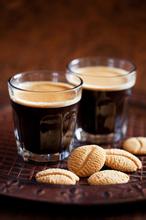An introduction to the characteristics of coffee flavor and taste in the aroma and mellow aroma of Ethiopia's Xida Motede Manor.
Ethiopia is dominated by mountainous plateaus, mostly subordinate to the Ethiopian Plateau, the central and western parts are the main plateau, accounting for 2/3 of the whole territory. The Great Rift Valley of East Africa runs through the whole territory, with an average altitude of nearly 3,000 meters. It is known as the "Roof of Africa". The terrain around the plateau gradually declines. The Darol depression in the north drops to 113 meters below sea level, the lowest point in the country. The Red Sea coast is a narrow strip of plain. The desert and semi-desert areas in the north, south and northeast account for about 25% of the country's area. Dashan Peak in the West Gate Mountains is 4,623 meters above sea level, which is the highest peak in Ethiopia. By the 1950s and 1960s, many African countries had become independent one after another, and adopted green, yellow and red as their national flags, so they were called "pan-African colors". Ethiopia is one of the ancient African countries, with a long history of more than 3000 years, giving green, yellow and red three colors a deeper origin in this land. Historically, they have been associated with the liturgy of the Coptic Church, enshrined as symbols of the Trinity of the Father, the Son and the Holy Spirit, embodying the three virtues of loyalty, hope and mercy advocated by human freedom. These three colors also represent three regions of Ethiopia: Tikrit (red), Amhara (yellow), and Theoya (green). Green represents fertile land, mild climate and abundant plant resources, but also a symbol of hope for the future; yellow symbolizes peace and fraternity, but also represents the people's determination to build the country; red symbolizes that the people are ready to shed blood to defend the motherland On December 8, 1994, the Ethiopian Constitutional Assembly adopted the fourth constitution-the Constitution of the Federal Democratic Republic of Ethiopia, which came into effect on August 22 of the following year. The new constitution has 11 chapters and 106 articles, stipulating that Ethiopia is a federal country with separation of powers and parliamentary system. The President is the Head of State for a term of six years. The Prime Minister and Cabinet have the highest executive power. The majority party or political alliance forms a cabinet and is collectively responsible to the House of People's Representatives.
All ethnic groups are equal and autonomous and enjoy the right of national self-determination and secession. After the legislative body of any ethnic group adopts the request for secession by a two-thirds majority, the federal government shall organize a referendum for that ethnic group within three years. The majority agrees to secede from the Federation. A canton may use its native language as a cantonal working language. Private property is guaranteed, but the State has the right to expropriate it for compensation. Urban and rural land and natural resources shall be owned by the state and shall not be sold, sold or transferred. A multi-ethnic national army and police force shall be formed, and the army shall not interfere in government affairs. Guarantee of democratic freedoms and fundamental rights of citizens
Sidamo coffee is very diverse. Different soil types, microclimate and numerous native coffee species, high mountains, highlands, plateaus, valleys and plains, diverse terrain, and the geology of the area is rich in nutrients, well drained volcanic soil, soil depth of nearly two meters, the surface soil is dark brown or brown. Its greatest advantage is that soil fertility is maintained through the recycling of organic matter, using withered leaves from surrounding trees or plant roots as fertilizer. Therefore, the coffee produced in the town has obvious differences and characteristics. From 2010 to 2012, it won high scores of CR92~94 from the authoritative coffee evaluation website in the United States. This shows that the production of raw beans extraordinary.
Sitama coffee beans are slightly gray, some places are coarse and some places are fine, the acidity is soft and strong, the alcohol is appropriate, and the sweet and spicy aroma is one of the courtyard coffees in the southern highlands of Ethiopia. It differs from African coffee in that it has a clear acidity, a smooth texture and a delicate floral aroma. Sun-baked sidamo tastes close to floral, but slightly earthy. Wash it with nutty fruit aromas, with a slight cocoa aroma, but the two have in common a smooth taste and viscosity, pleasant acidity and aroma. Light or medium roasts are suitable for single serve, medium or deep roasts are suitable for blended coffee and a good Espresso base.
Sitama treated by washing is light green, small beans, oval growth, full fruit, good average quality, mellow smell, a drop of mouth, endless aftertaste, with wild beauty. It is elegant and playful, mild and pleasant on the palate, with a strong taste impact later on with bright lemon acid, unique and mellow, sweet and pleasant, slowly rising with a unique sweet finish. It grows in the southernmost Ethiopian plateau between 4,600 and 7,200 feet above sea level (Sidamo Province). It is a famous boutique coffee area in southern Ethiopia. It borders Kenya and is located southeast of Gemma. Due south of the capital, it is usually sweet and obvious. It is also preferred by most people, with an annual output of about 225000 bags/60kg. The beans are smaller than Longberry, green and gray. In the sun drying field of Sidamo, coffee is placed in hemp net rack. Workers take turns to stir coffee manually under the sun exposure. Sun-dried Sidamo is usually labeled as G4 export. Because the processing process is more perfect than sunlight, most of them export more with G2 grade.
Sidamo coffee is very diverse. Different soil types, microclimate and numerous native coffee species, high mountains, highlands, plateaus, valleys and plains, diverse terrain, and the geology of the area is rich in nutrients, well drained volcanic soil, soil depth of nearly two meters, the surface soil is dark brown or brown. Its greatest advantage is that soil fertility is maintained through the recycling of organic matter, using withered leaves from surrounding trees or plant roots as fertilizer. Therefore, the coffee produced in the town has obvious differences and characteristics. From 2010 to 2012, it won high scores of CR92~94 from the authoritative coffee evaluation website in the United States. This shows that the production of raw beans extraordinary

Important Notice :
前街咖啡 FrontStreet Coffee has moved to new addredd:
FrontStreet Coffee Address: 315,Donghua East Road,GuangZhou
Tel:020 38364473
- Prev

Introduction to the coffee flavor and taste of Papua New Guinea Paradise Bird Manor with bright sour aroma.
Papua New Guinea is the second largest country in the South Pacific after Australia in population and area. It consists of New Guinea in the north and Papua in the south. It borders the province of Irian Jaya in Indonesia to the west and faces Australia across the Torres Strait to the south. It belongs to Melanesia. Papua New Guinea covers an area of 462840 square kilometers and has a complete coastline.
- Next

Introduction to the characteristics of coffee flavor and taste in Costa Rican Goddess Manor
The research center, located about 30 kilometers northeast of the Costa Rican capital San Jose, belongs to the Costa Rican Coffee Association and is a research institution for villa sarchi planting, breeding and quality inspection newly developed by Costa Rica's national coffee breeds. in addition, it also has 10 hectares of experimental plots, planting a number of excellent varieties. Coffee is the main agricultural product in Costa Rica, with an annual output of more than 2 million bags
Related
- Does Rose Summer choose Blue, Green or Red? Detailed explanation of Rose Summer Coffee plots and Classification in Panamanian Jade Manor
- What is the difference between the origin, producing area, processing plant, cooperative and manor of coffee beans?
- How fine does the espresso powder fit? how to grind the espresso?
- Sca coffee roasting degree color card coffee roasting degree 8 roasting color values what do you mean?
- The practice of lattes: how to make lattes at home
- Introduction to Indonesian Fine Coffee beans-- Java Coffee producing area of Indonesian Arabica Coffee
- How much will the flavor of light and medium roasted rose summer be expressed? What baking level is rose summer suitable for?
- Introduction to the characteristics of washing, sun-drying or wet-planing coffee commonly used in Mantenin, Indonesia
- Price characteristics of Arabica Coffee Bean Starbucks introduction to Manning Coffee Bean Taste producing area Variety Manor
- What is the authentic Yega flavor? What are the flavor characteristics of the really excellent Yejasuffi coffee beans?

